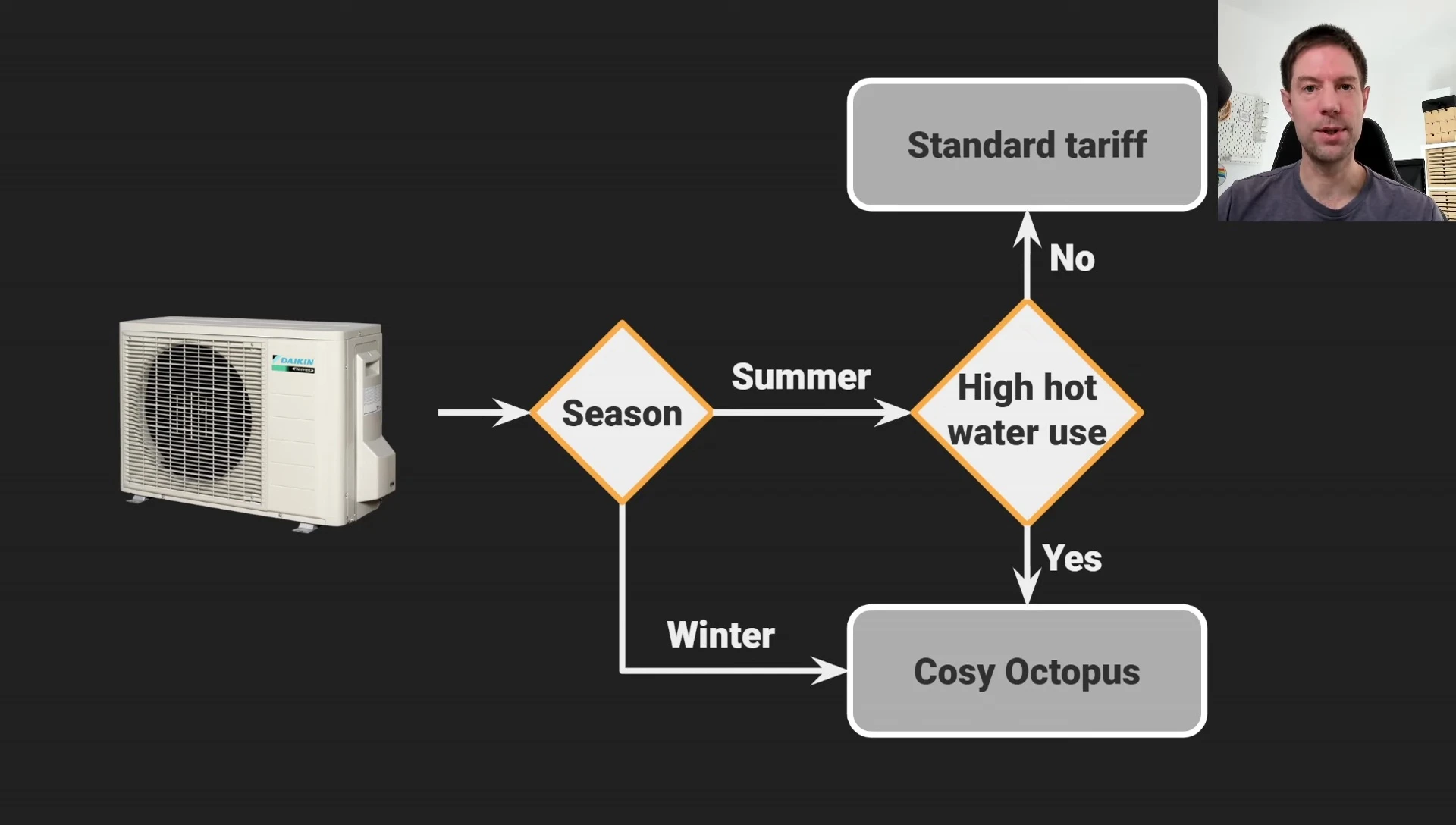Choosing the right energy tariff can significantly impact your green tech setup's cost-effectiveness. This article navigates the complexities of smart tariffs, guiding you through the optimal choices for various combinations of electric vehicles (EVs), home batteries, heat pumps, and solar panels. We explore leading suppliers like Octopus Energy and Eon Next, comparing their offerings and highlighting key features such as off-peak pricing, export tariffs, and smart charging capabilities. Understanding your energy consumption patterns – particularly seasonal variations – is crucial for maximizing savings.This guide dissects the best tariff options for individual green technologies and their combinations. Whether you own an EV, a home battery, a heat pump, or solar panels, or even a mix of these, we offer practical advice on selecting the most financially advantageous tariff. We delve into the specifics of tariffs like Octopus Go, Eon Next Drive, Cozy Octopus, and Snug Octopus Go, explaining when each is most beneficial. Ultimately, this article empowers you to make an informed decision, optimizing your energy costs and maximizing the efficiency of your sustainable technology investments.
Pros And Cons
- Designed for winter heat pump use
- Three off-peak dips in tariff for hot water heating
- Peak period rate is high
- May not be beneficial for low hot water usage
- New smart tariff for storage heaters
- Charges storage heaters overnight at a cheap rate
- Good EV smart tariff
- Similar to Octopus Go, potentially better overnight rate
- Doesn't require proof of EV ownership for battery owners
- Requires a smart meter
- Better version of Octopus Go
- Extended cheap periods beyond overnight
- Requires compatible EV or smart charger
- Requires proof of EV ownership
Read more: Nuwave PIC Titanium Induction Cooktop Review: A Mixed Bag of Features
Electric Vehicles (EVs) Only
If you only have an EV, your best bet is an EV-specific tariff. These tariffs offer cheaper electricity during off-peak hours, typically overnight, when you can charge your car. Octopus Go and its improved version, Intelligent Octopus Go, were pioneers in this field, offering extended charging windows.
Other suppliers offer similar deals. Eon Next Drive is a strong contender, sometimes boasting even better overnight rates than Intelligent Octopus Go. Remember, you'll need a smart meter and proof of EV ownership for many of these plans.
Home Battery Storage Only
For households with just a home battery, the situation mirrors that of EV owners. Since you lack an EV, you can't access Octopus Go. Therefore, you need an EV tariff that doesn't require EV ownership verification.
Eon Next Drive again emerges as a top choice due to its competitive off-peak pricing and availability without needing EV proof. Check various suppliers for tariffs suitable for home battery storage.
Heat Pumps
Heat pump tariffs depend heavily on the season. In summer, low hot water usage means a standard tariff might suffice. However, high hot water consumption might make Cozy Octopus a better option due to its three off-peak periods for efficient water heating.

During winter, Cozy Octopus shines, offering lower rates during off-peak hours. This helps offset the higher peak-time rates, especially beneficial for high hot water use households. If your hot water usage is low, a standard tariff could still be more cost-effective.
Storage Heaters
Summer use with storage heaters calls for a standard tariff for optimal savings. In winter, Economy 7 tariffs or the newer Snug Octopus Go become attractive. Snug Octopus Go is a smart tariff, charging storage heaters cheaply overnight and utilizing that stored heat during the day.

Snug Octopus Go cleverly modernizes Economy 7, offering smart control and off-peak charging. Check the compatibility of your storage heaters before opting for this smart solution.
Solar Panels Only or with Battery
With solar panels, a decent export tariff is crucial, regardless of battery ownership. Octopus and Eon Next offer strong options here. Octopus's Outgoing tariff, paying 15p/kWh for exported energy, is noteworthy.

If you have a battery, the best tariff depends on the battery and array size. Large arrays and batteries in summer make Octopus Flux or Intelligent Octopus Flux ideal, maximizing high evening export rates. Smaller setups might favor EV tariffs for better overall daily rates.
Solar, EV, and Heat Pump Combinations
This scenario blends previous considerations. Summer often favors Octopus Flux for large arrays/batteries, while EV tariffs shine with smaller setups or high EV use. Winter leans towards EV tariffs unless EV use is minimal, making Cozy Octopus a competitive alternative.

The ideal scenario includes all three: solar, EV, and heat pump. This allows for maximum savings by strategically using off-peak rates and maximizing solar energy export. Seasonal tariff switching may optimize cost savings further.
Conclusion: The Default Choice
The speaker concludes that, despite the complexity, an EV tariff is often the safest bet. It provides excellent overnight rates, enabling effective load shifting for appliances and charging EVs. Other tariffs might offer marginal improvements in specific situations, but EV tariffs provide a strong foundation for most users.

While seasonal switching between EV and other tariffs (like Octopus Flux) can further enhance savings, the simplicity and broad effectiveness of EV tariffs make them an excellent default choice for various energy setups. Consider your specific needs and energy usage to make the most informed decision.

